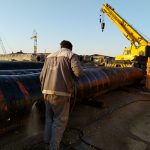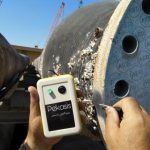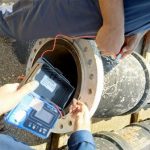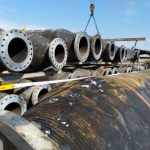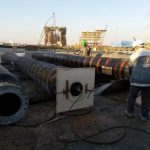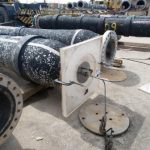Triple Test of SPM Terminal Floating & Subsea Hoses
We fully understand the value of your hoses and recommend the regular testing of your marine, subsea and ship to ship hoses. Our expert team provides testing services for all type of hoses to ensure the continued safe and reliable performance of your transfer and loading of hoses, minimising the risk of damage or a serious incident.
Petro Kavosh Parsis Company (Pekasis) is a professional services company authorised via Man Oil & Marine repair and test services center for Marine Floating, Subsea and STS hoses, we can also test other high-quality hoses for any offshore applications. For more information or details please contact our services dept.
We have been prepared to provide the user with recommendations for proper handling of marine hoses from the time of delivery on site to the end of the hose working life.
• All Hoses can be tested at customer sites/location, or at our workshop bases.
• We prepare guide for handling marine hose, including transport and storage.
• We prepare guide for offshore visual inspection and testing.
• We prepare guide for onshore visual inspection and testing.
• All Tests are performed in accordance with manufacturer's’ recommendations and handbook and include:
1. Marine Growth Removal, perform cleaning marine growth attached to the outer surface of hose at the time after a visual inspection using high pressure washing or manually using a hand soft scrub.
2. Offshore and onshore visual inspection, internal & external, checking for cracks, break or split, checking cover and float medium, excessive corrosion, slippage of end fittings & displacement and performance of minor repairs on external surface of hoses, if any after hose marine growth removal.
3. Bolt and nut tightness inspection at least allowance for 20% of bolts and nuts torque check on each flange, will include bolt & nuts condition inspection; if found loose, all bolts on the flange to be tightened to the torque standard recommended by manufacturer and replace if found damage or missing.
4. Electrical continuity test: Electrical Tests should be carried out in accordance with the procedures with the hose empty and both before and after the hydrostatic test. We ensuring electrical resistance do not exceed specified limits.
5. Vacuum Test: Each hose should be tested to minus 0.85 bar gauge for a period of ten minutes.
6. Hydrostatic test: Pressurizing hose to specified pressure & duration according to manufacturer procedures, checking for leaks. Each hose should be subjected to a Hydrostatic Pressure Test to ensure integrity before going to service.

